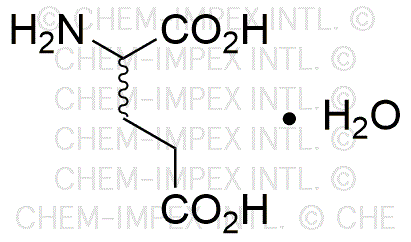DL-Glutamic acid monohydrate is widely utilized in research focused on:
- Food Industry: It serves as a flavor enhancer in various food products, improving taste without adding calories, making it popular in low-calorie and health-focused diets.
- Pharmaceuticals: This compound is used in the formulation of medications, particularly in neurological treatments, as it plays a crucial role in neurotransmission.
- Biotechnology: In cell culture media, it supports the growth of cells and tissues, making it essential for researchers in regenerative medicine and tissue engineering.
- Cosmetics: It is incorporated into skincare products for its moisturizing properties, helping to improve skin hydration and elasticity.
- Agriculture: As a supplement in fertilizers, it enhances plant growth and nutrient absorption, promoting healthier crops and higher yields.
General Information
Properties
Safety and Regulations
Applications
DL-Glutamic acid monohydrate is widely utilized in research focused on:
- Food Industry: It serves as a flavor enhancer in various food products, improving taste without adding calories, making it popular in low-calorie and health-focused diets.
- Pharmaceuticals: This compound is used in the formulation of medications, particularly in neurological treatments, as it plays a crucial role in neurotransmission.
- Biotechnology: In cell culture media, it supports the growth of cells and tissues, making it essential for researchers in regenerative medicine and tissue engineering.
- Cosmetics: It is incorporated into skincare products for its moisturizing properties, helping to improve skin hydration and elasticity.
- Agriculture: As a supplement in fertilizers, it enhances plant growth and nutrient absorption, promoting healthier crops and higher yields.
Documents
Safety Data Sheets (SDS)
The SDS provides comprehensive safety information on handling, storage, and disposal of the product.
Product Specification (PS)
The PS provides a comprehensive breakdown of the product’s properties, including chemical composition, physical state, purity, and storage requirements. It also details acceptable quality ranges and the product's intended applications.
Certificates of Analysis (COA)
Search for Certificates of Analysis (COA) by entering the products Lot Number. Lot and Batch Numbers can be found on a product’s label following the words ‘Lot’ or ‘Batch’.
*Catalog Number
*Lot Number
Certificates Of Origin (COO)
This COO confirms the country where the product was manufactured, and also details the materials and components used in it and whether it is derived from natural, synthetic, or other specific sources. This certificate may be required for customs, trade, and regulatory compliance.
*Catalog Number
*Lot Number
Safety Data Sheets (SDS)
The SDS provides comprehensive safety information on handling, storage, and disposal of the product.
DownloadProduct Specification (PS)
The PS provides a comprehensive breakdown of the product’s properties, including chemical composition, physical state, purity, and storage requirements. It also details acceptable quality ranges and the product's intended applications.
DownloadCertificates of Analysis (COA)
Search for Certificates of Analysis (COA) by entering the products Lot Number. Lot and Batch Numbers can be found on a product’s label following the words ‘Lot’ or ‘Batch’.
*Catalog Number
*Lot Number
Certificates Of Origin (COO)
This COO confirms the country where the product was manufactured, and also details the materials and components used in it and whether it is derived from natural, synthetic, or other specific sources. This certificate may be required for customs, trade, and regulatory compliance.


